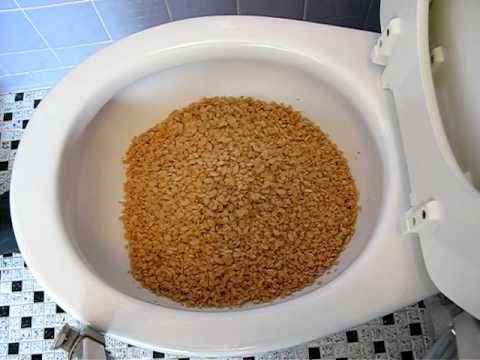Can One to Flush Food in the Toilet?
Can One to Flush Food in the Toilet?
Blog Article
We've stumbled upon this article involving Is it safe to flush food (especially rice) down the toilet? below on the web and figured it made good sense to quickly share it with you in this article.

Introduction
Lots of people are usually confronted with the predicament of what to do with food waste, especially when it pertains to leftovers or scraps. One common inquiry that arises is whether it's fine to purge food down the commode. In this article, we'll look into the reasons that individuals could consider flushing food, the consequences of doing so, and alternate techniques for correct disposal.
Reasons why people may think about purging food
Lack of understanding
Some people might not be aware of the possible damage triggered by purging food down the commode. They might wrongly believe that it's a harmless practice.
Ease
Flushing food down the toilet may seem like a fast and very easy service to throwing away unwanted scraps, specifically when there's no close-by trash can available.
Laziness
Sometimes, people might merely pick to flush food out of large laziness, without thinking about the effects of their activities.
Consequences of flushing food down the toilet
Ecological effect
Food waste that winds up in rivers can contribute to contamination and injury marine environments. Furthermore, the water made use of to purge food can stress water resources.
Pipes problems
Flushing food can lead to clogged up pipelines and drains pipes, creating costly pipes fixings and aggravations.
Kinds of food that must not be purged
Fibrous foods
Foods with fibrous textures such as celery or corn husks can get entangled in pipes and create clogs.
Starchy foods
Starchy foods like pasta and rice can take in water and swell, bring about obstructions in pipes.
Oils and fats
Greasy foods like bacon or food preparation oils need to never be purged down the toilet as they can strengthen and trigger blockages.
Appropriate disposal methods for food waste
Utilizing a garbage disposal
For homes geared up with waste disposal unit, food scraps can be ground up and purged through the plumbing system. Nevertheless, not all foods appropriate for disposal in this way.
Recycling
Certain food packaging products can be recycled, minimizing waste and decreasing ecological influence.
Composting
Composting is an environment-friendly way to take care of food waste. Organic products can be composted and made use of to improve dirt for horticulture.
The significance of appropriate waste management
Decreasing ecological injury
Appropriate waste monitoring practices, such as composting and recycling, assistance lessen air pollution and protect natural resources for future generations.
Shielding pipes systems
By avoiding the technique of flushing food down the bathroom, house owners can stop expensive pipes repair services and maintain the stability of their pipes systems.
Verdict
Finally, while it might be tempting to purge food down the toilet for convenience, it is essential to understand the possible effects of this action. By taking on correct waste management techniques and getting rid of food waste responsibly, people can contribute to healthier pipes systems and a cleaner atmosphere for all.
FLUSH FOOD DOWN THE TOILET?
FLUSHING FOOD CAN CAUSE BLOCKED DRAINS IN YOUR HOME
All of the plumbing fixtures in your home are connected to the same sewer pipe outside of your home. This outdoor sewer pipe is responsible for transporting all the wastewater from your home to the Council sewer mains. Even small pieces of food that go down the kitchen sink can cause problems for your sewer. It should therefore be obvious that flushing larger bits of food, such as meat, risks a clog in either the toilet itself or the sewer pipes. Flushing greasy food is even more problematic because oil coagulates when it cools, coating the interior lining of your pipes.
THE TOILET IS NOT A BIN
Food isn’t the only thing that people shouldn’t be flushing down the toilet. People use the toilet to dispose of all kinds of things such as tampons, makeup wipes, dental floss, kitty litter and even underwear. Water goes to great lengths to educate residents about the high costs and stress placed on wastewater treatment systems simply from people flushing the wrong stuff down the toilet. It costs taxpayers millions of dollars each year, and homeowners thousands in blocked drain repairs.
FLUSHING FOOD IS A WASTE OF WATER
Flushing food is a waste of our most precious resource - water. In June this year Level 1 water restrictions were introduced to protect water supply from drought conditions. Much of New South Wales continues to be affected by prolonged drought with recent figures revealing up to 97 per cent of the state remains in drought. Depending on whether you have a single or dual flush toilet, every single flush uses between five and 11 litres of water. In the current climate this is a huge amount of water to be wasting on flushing food that should be placed in the bin (or better yet, the compost).
https://www.jabplumbingsolutions.com.au/blog/can-you-flush-food-down-the-toilet

We are very eager about and I hope you liked the new entry. Do you know someone else who is curious about the niche? Do not hesitate to share it. Thank you so much for your time spent reading it.
Call Us Today Report this page